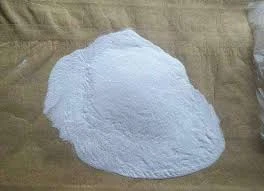Hydroxyethyl Methyl Cellulose for Liquid Soaps A Comprehensive Overview
In the realm of personal care products, particularly liquid soaps, the quest for effective and safe ingredients has led formulators to explore a variety of compounds. One such ingredient that has gained significant traction is Hydroxyethyl Methyl Cellulose (HEMC). This plant-derived polymer boasts a range of properties that make it particularly suited for incorporation into liquid soaps, enhancing their performance and consumer appeal.
What is Hydroxyethyl Methyl Cellulose?
Hydroxyethyl Methyl Cellulose is a non-ionic, water-soluble cellulose ether. It is synthesized from natural cellulose through a process of etherification, during which hydroxyl groups on the cellulose molecules are replaced with hydroxyethyl and methyl groups. This modification helps to enhance the solubility and functionality of cellulose in various formulations. HEMC has gained popularity in the cosmetic and personal care industry due to its thickening, stabilizing, and film-forming properties.
Benefits of HEMC in Liquid Soaps
1. Thickening Agent One of the primary uses of HEMC in liquid soaps is as a thickening agent. Liquid soaps that are overly thin may be perceived as low-quality by consumers. By incorporating HEMC, formulators can achieve the desired viscosity, creating a luxurious and appealing product that is easy to dispense and use.
2. Stabilizing Properties HEMC helps stabilize emulsions and suspensions in liquid soaps. This is particularly important in formulations containing various oils and surfactants, where separation can occur over time. The inclusion of HEMC allows for a more homogenous product, which enhances the overall stability and shelf-life of the soap.
3. Film-Forming Abilities When applied to the skin, HEMC forms a thin film that can enhance the moisturizing properties of liquid soaps. This film helps to retain moisture, providing a protective layer that can improve skin feel and softness. Such characteristics are increasingly valued by consumers seeking hydration from their cleansing products.
hydroxyethyl methyl cellulose for liquid soaps

4. Ease of Use HEMC is compatible with a wide range of ingredients commonly used in liquid soap formulations, including surfactants, fragrances, and colorants. This versatility makes it an advantageous choice for formulators looking to create innovative and effective products without compromising on quality.
5. Safety and Biocompatibility As a derivative of plant cellulose, HEMC is considered safe for use in cosmetic products. It has low toxicity and is generally well-tolerated by the skin, making it a favorable option in formulations designed for sensitive skin. Additionally, HEMC's natural origins align with the growing consumer demand for eco-friendly and sustainable products.
Formulation Considerations
Incorporating HEMC into liquid soap formulations requires some considerations. Typically, it is recommended to dissolve HEMC in warm water to achieve uniform distribution. The amount of HEMC used can vary, depending on the desired viscosity and formulation characteristics. It is crucial for formulators to conduct thorough testing to optimize the concentration of HEMC for their specific product goals.
Conclusion
Hydroxyethyl Methyl Cellulose is a powerful ingredient that can revolutionize the formulation of liquid soaps. With its thickening, stabilizing, and film-forming properties, HEMC not only enhances the functional attributes of these products but also contributes to consumer satisfaction. As the demand for effective and safe personal care products continues to rise, HEMC stands out as an exceptional choice for formulators aiming to meet these evolving needs.
For cosmetic brands looking to innovate and enhance their liquid soap offerings, the incorporation of Hydroxyethyl Methyl Cellulose represents a strategic move towards achieving higher quality and more marketable products, ensuring a competitive edge in the ever-expanding personal care landscape.
-
Rdp Powder: Key Considerations for Wholesalers in the Building Materials IndustryNewsJul.08,2025
-
Key Considerations for Wholesalers: Navigating the World of Hpmc - Based ProductsNewsJul.08,2025
-
Hpmc Detergent: Key Considerations for WholesalersNewsJul.08,2025
-
Key Considerations for Wholesalers: China Hpmc For Tile Adhesive, Coating Additives, Concrete Additives, and MoreNewsJul.08,2025
-
Crucial Considerations for Wholesalers: Navigating the World of Construction MaterialsNewsJul.08,2025
-
Key Considerations for Wholesalers Sourcing Additive For Cement, Additive For Concrete, Additive For Putty from Additive Manufacturer Shijiazhuang Gaocheng District Yongfeng Cellulose Co., Ltd.NewsJul.08,2025




